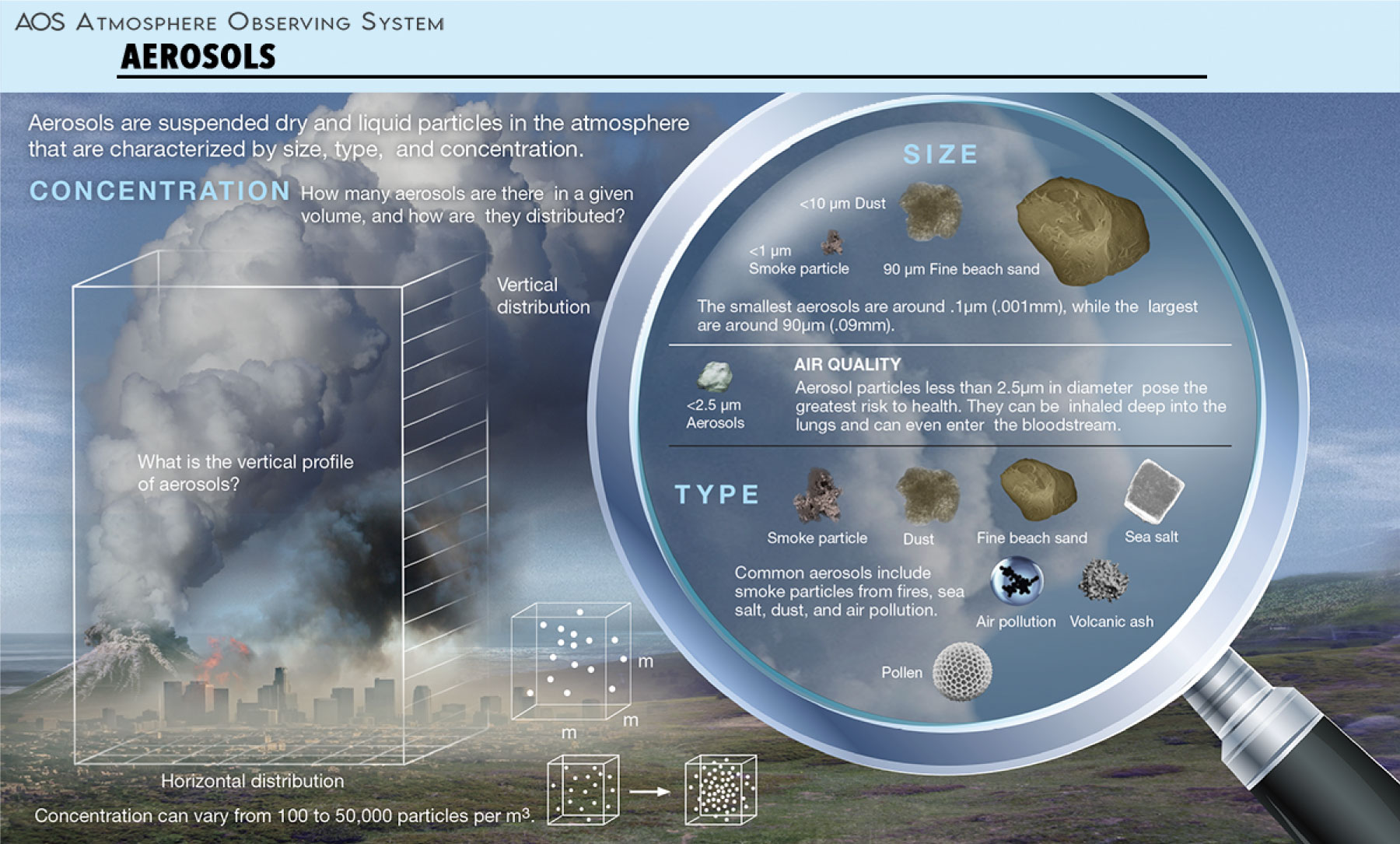
Canada’s contribution – involving two instruments and a satellite – is estimated at more than $200 million, with launches slated to be in 2028 and 2031. The multi-satellite mission aims to improve extreme weather prediction, climate modelling, and the monitoring of disasters.
HAWC
Specifically, Canada’s element in the AOS will be the High-altitude Aerosols, Water vapour and Clouds (HAWC) mission. This consists, in total, of three instruments three satellite, which are planned for launch in 2031.
The instruments will provide data for climate scientists to more accurately predict severe storms, floods, droughts and poor air quality conditions.
HAWC and AOS data will be fully accessible promises the Canadian Space Agency (CSA).
Aerosol-cloud
The AOS mission will be a way of examining links among aerosols, clouds, atmospheric convection, and precipitation, says the CSA. Specifically, providing insight into the vertical structure and movement of aerosols, clouds and precipitation in the atmosphere.
Apparently, uncertainties in the representation of aerosol-cloud processes and their interactions with radiation in Earth System Models are the main source of uncertainty in climate change projections.
“Satellites give us a valuable view of earth; from space we can observe and monitor the weather and our changing climate,” said Steven Guilbeault, the Canadian Minister of Environment and Climate Change.
“The instruments Canada are providing toward this mission will take measurements that are important to understanding weather and climate change, while providing data that will be used by our meteorologists and scientists to enhance predictions and improve our weather, air quality, and climate models.”
The AOS team includes – as well as the CSA and Nasa – JAXA (Japan), CNES (France) and DLR (Germany).
The Canadian university consortium involved with HAWC includes 13 universities across the country: University of Saskatchewan, University of Toronto, Université du Québec à Montréal, McGill University, University of New Brunswick, Université de Sherbrooke, University of Waterloo, Wilfrid Laurier University, St. Francis Xavier University, Saint Mary’s University, University of Victoria, Western University and Dalhousie University.
Image: Nasa
See also: Canada signs up to build Canadarm3 for Lunar Gateway







